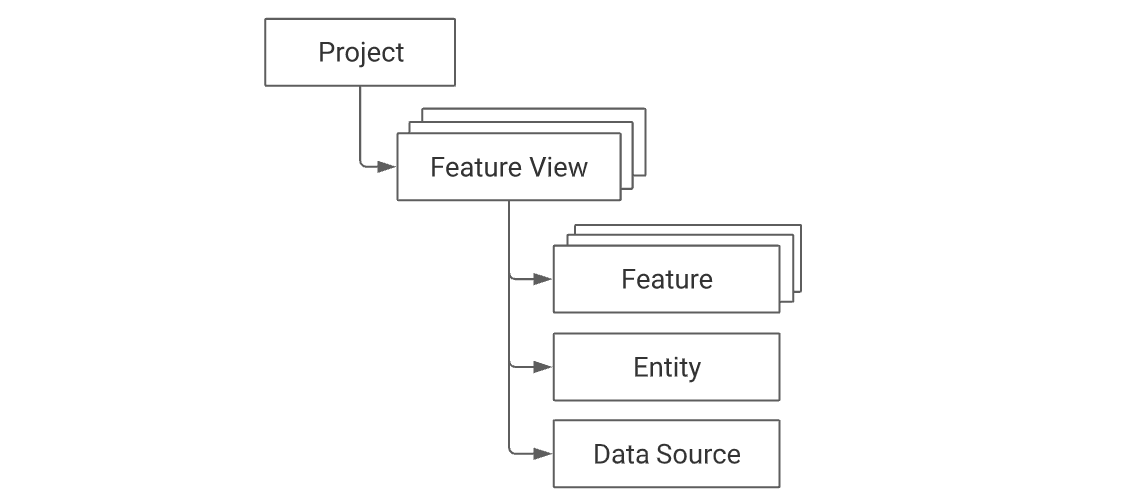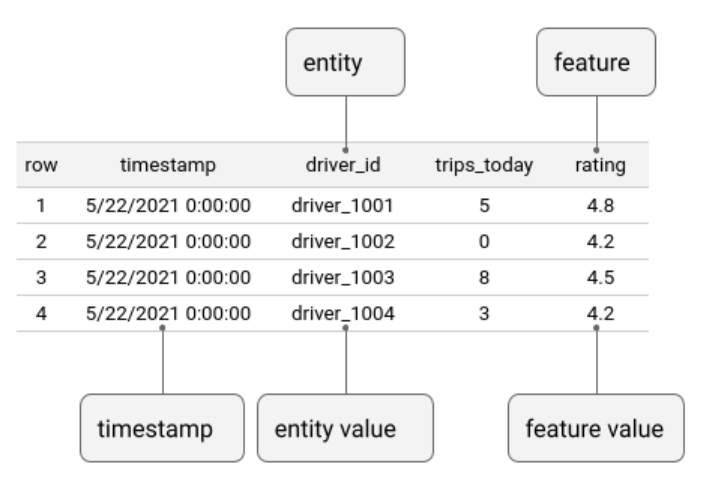Feast
The top-level namespace within Feast is a project. Users define one or more feature views within a project. Each feature view contains one or more features. These features typically relate to one or more entities. A feature view must always have a data source, which in turn is used during the generation of training datasets and when materializing feature values into the online store.


Entity
An entity is a collection of semantically related features. Users define entities to map to the domain of their use case. For example, a ride-hailing service could have customers and drivers as their entities, which group related features that correspond to these customers and drivers.
driver = Entity(name='driver', join_keys=['driver_id'])
Feast’s primary object for defining features is a feature view, which is a collection of features. Feature views map to 0 or more entities, since a feature can be associated with:
- zero entities (e.g. a global feature like num_daily_global_transactions)
- one entity (e.g. a user feature like user_age or last_5_bought_items)
- multiple entities, aka a composite key (e.g. a user + merchant category feature like num_user_purchases_in_merchant_category)
At training time, users control what entities they want to look up, for example corresponding to train / test / validation splits. A user specifies a list of entity keys + timestamps they want to fetch point-in-time correct features for to generate a training dataset.
At serving time, users specify entity key(s) to fetch the latest feature values which can power real-time model prediction (e.g. a fraud detection model that needs to fetch the latest transaction user’s features to make a prediction